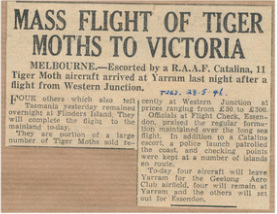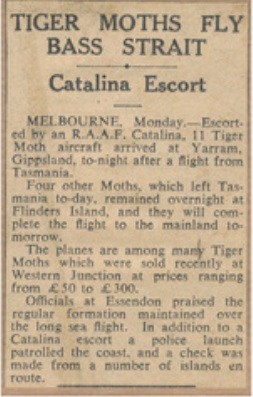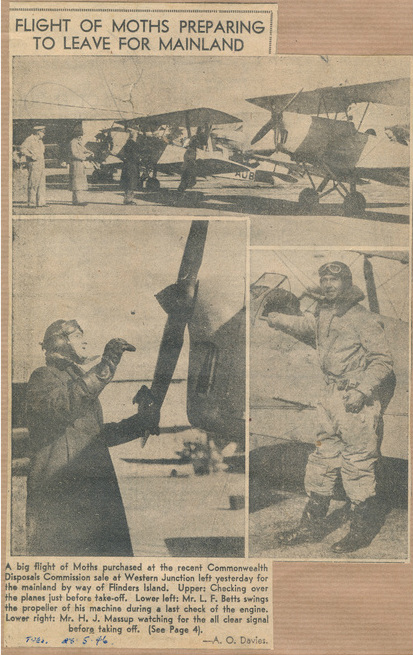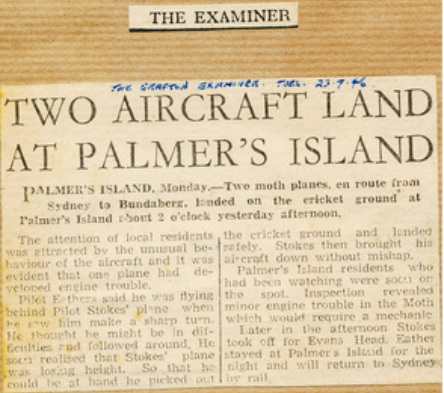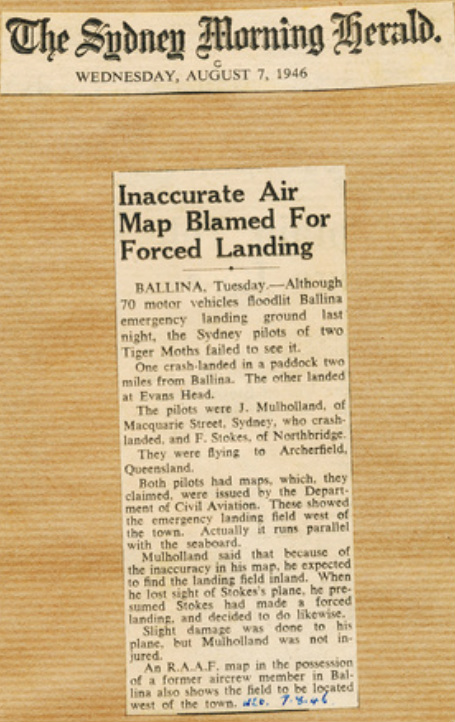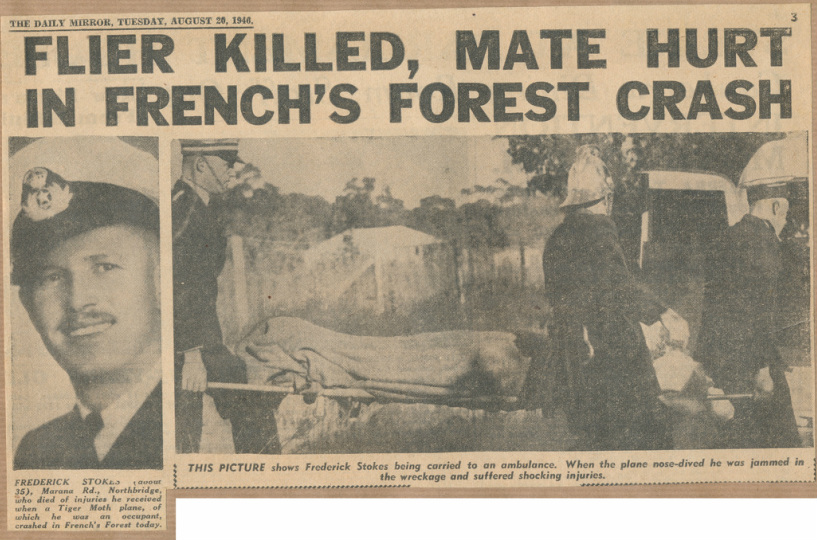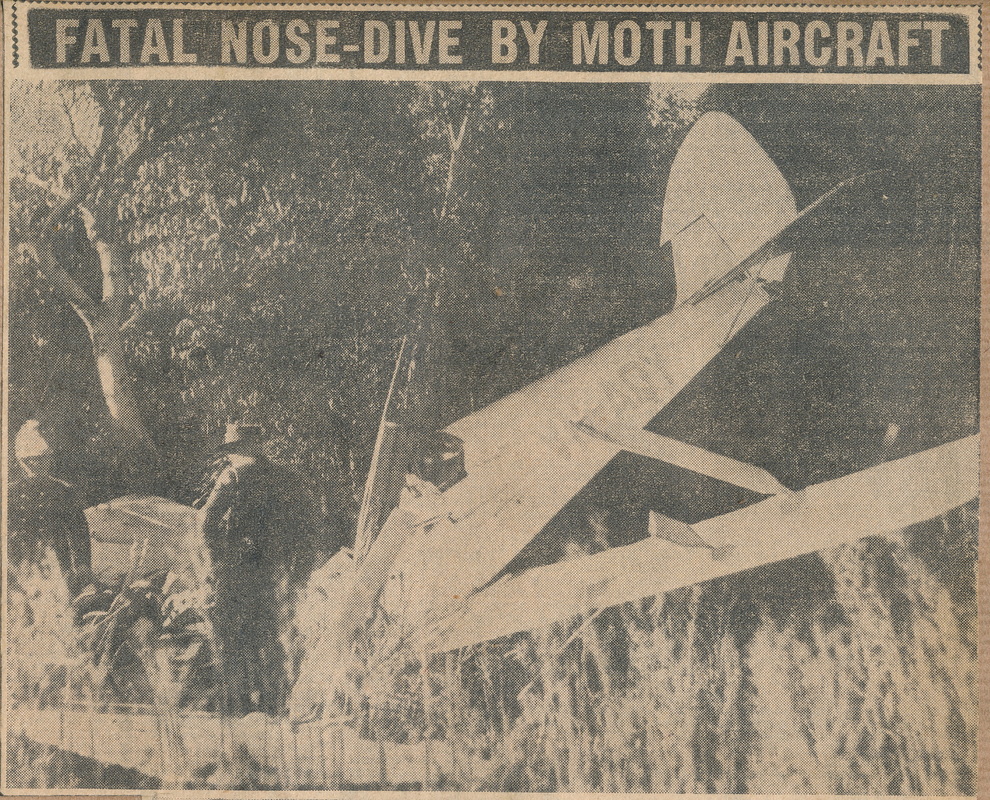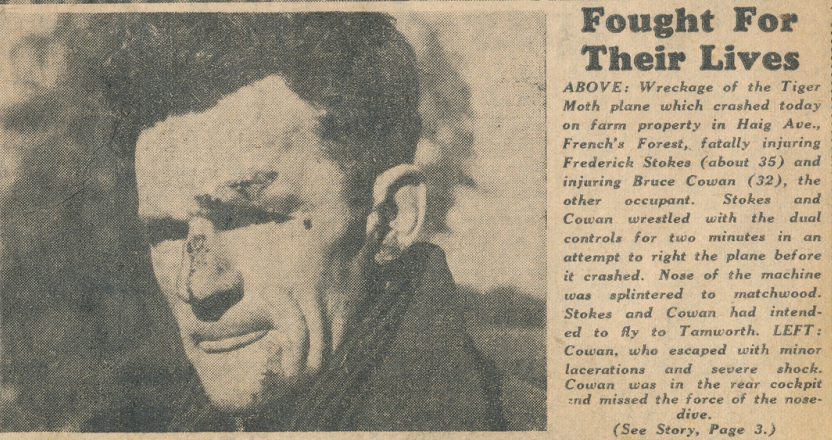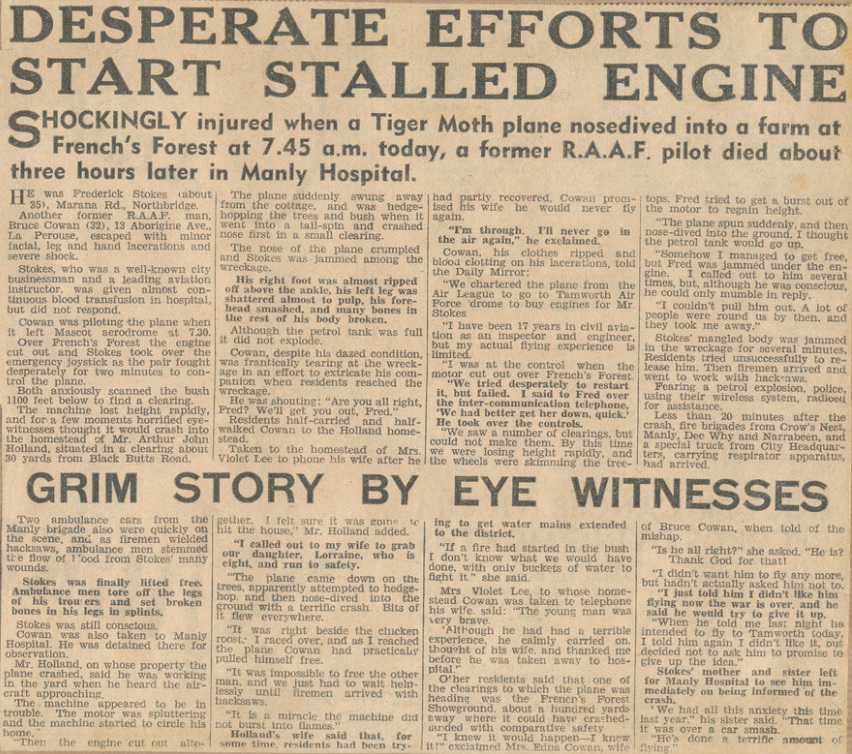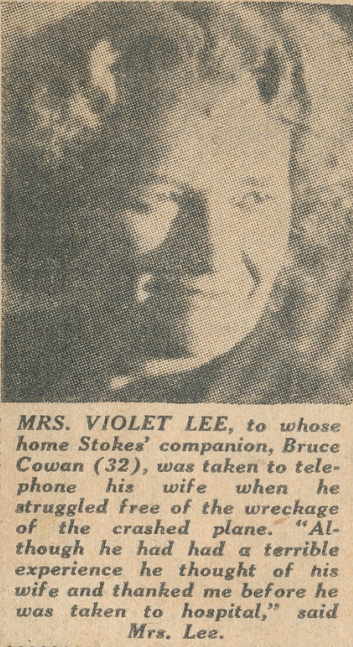Surplus Tiger Moths
The next two months brought various ferry assignments. The most notable was my part in a mass flight of biplanes purchased from the Commonwealth Disposal Commission. The Tiger Moths had cost from 50 to 300 pounds each and were located at Western Junction, Tasmania.
On the morning of 27 May 1946 eleven Tiger Moths were lined up in formations of three. The Tower cleared us for take off but only seven answered the green light. A final magneto check of the Gipsy Major engines had indicated unacceptable rev-drop on four of the planes. One of these was my plane VH-AUM (A17/308). By early afternoon the problems were rectified and we reached Pat’s River on Flinders Island after a 95-minute flight.
On the morning of 27 May 1946 eleven Tiger Moths were lined up in formations of three. The Tower cleared us for take off but only seven answered the green light. A final magneto check of the Gipsy Major engines had indicated unacceptable rev-drop on four of the planes. One of these was my plane VH-AUM (A17/308). By early afternoon the problems were rectified and we reached Pat’s River on Flinders Island after a 95-minute flight.
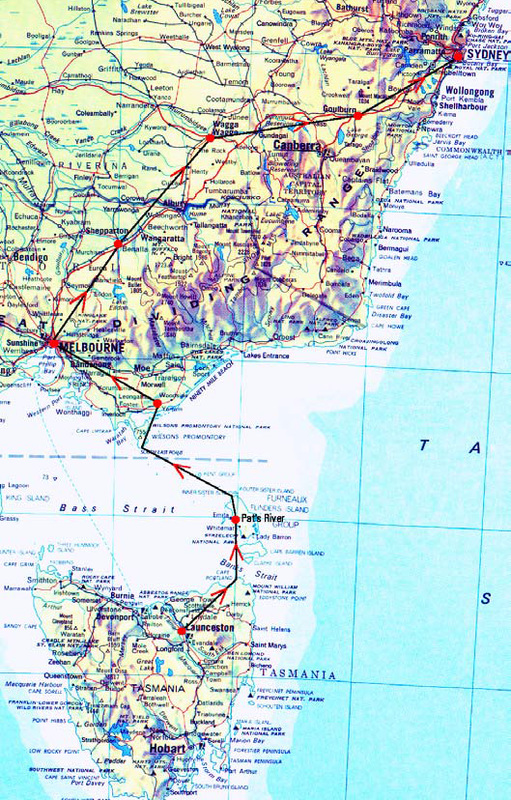
De havilland Aircraft employed me for this ferry flight. The route began at Western Junction, Launceston on 27 may 1946 and took me through Pat's River, Flinders Island, Yarram, Essendon, Benalla, Wagga, Gourlburn to Mascot where I landed 8 June 1946. Why the company chose the route escapes my memory. It seems tortuous back tracking to Essendon!
Here we faced further problems as the refuelling crew had gone off to the pub. When we were finally topped-up we were advised that the Air Sea Rescue Catalina crew had stood down for the day, and without ASR coverage we were refused a clearance since our aircraft carried no emergency equipment.
Then, during the night a gale ripped one of the Tigers from its tie-down position and slammed it into the other three.
Although the damage was minor they required a Ground Engineer to issue each plane a Certificate of Airworthiness. A message from the circling Catalina advised that the gale had whipped Bass Strait into a cauldron of danger with headwinds of 60 knots. Having succeeded in ruining our day she headed for her comfortable base on the mainland. The four days it took the gale to abate were ones of utter boredom, for Pat’s River contained less life than the average cemetery. On the fifth morning, bleak wind-tortured Wilson’s Promontory rose on the misty horizon. It was a welcome sight yet depressed me with its isolated grandeur. Thankfully, the remainder of the flight to Mascot, Sydney, had an incident free novelty.
Then, during the night a gale ripped one of the Tigers from its tie-down position and slammed it into the other three.
Although the damage was minor they required a Ground Engineer to issue each plane a Certificate of Airworthiness. A message from the circling Catalina advised that the gale had whipped Bass Strait into a cauldron of danger with headwinds of 60 knots. Having succeeded in ruining our day she headed for her comfortable base on the mainland. The four days it took the gale to abate were ones of utter boredom, for Pat’s River contained less life than the average cemetery. On the fifth morning, bleak wind-tortured Wilson’s Promontory rose on the misty horizon. It was a welcome sight yet depressed me with its isolated grandeur. Thankfully, the remainder of the flight to Mascot, Sydney, had an incident free novelty.
I then teamed up with another Sydney pilot, Frederick Stokes, to fly two Tiger Moths from Mascot to Bundaberg. That flight ended near Grafton at Palmer’s Island in the Clarence River where we force-landed on the local cricket ground when his engine packed up. Despite his luckless reputation Fred survived for a brief period. Next month he and John Mulholland crash landed in a field at Ballina where the civic-minded local residents had turned on the lights of seventy motor vehicles in a fruitless attempt to draw his attention to the local emergency landing area. Neither pilot suffered injury, while their plane showed a few superficial scratches.
One month later Fred Stokes was killed when his Tiger Moth nose-dived into a farm at French’s Forest near Sydney.


